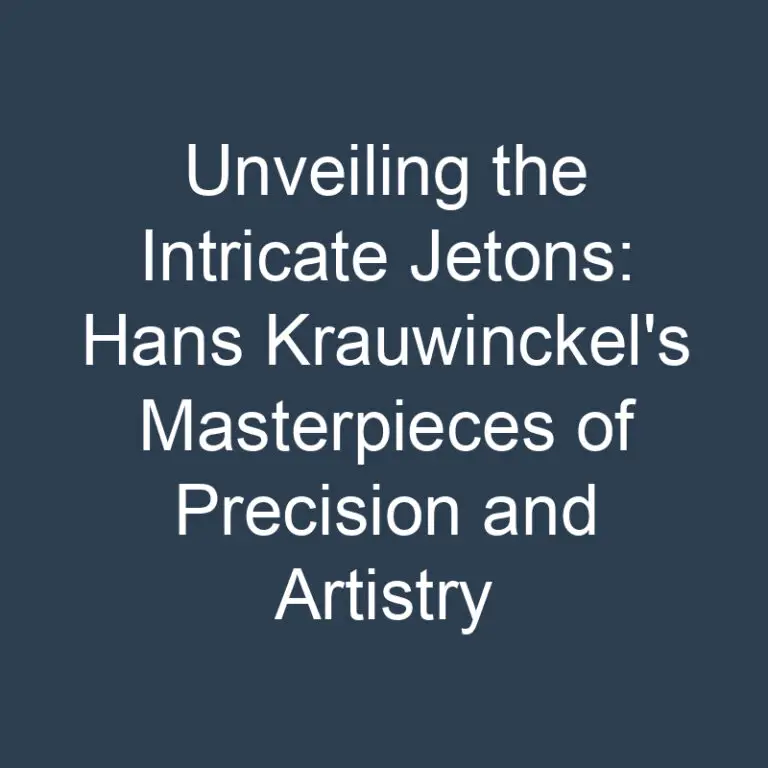
Are you curious about the key differences between uncirculated and proof coin sets? We’ve got you covered! Understanding these distinctions can help you make informed decisions when adding to your collection. Let’s delve into the nuances that set these two types of coin sets apart.
Uncirculated and proof sets may look similar at first glance, but a closer inspection reveals unique characteristics that make each set special. From the striking finishes to the minting process, there’s more than meets the eye when it comes to these collectibles. Join us as we explore the finer details that distinguish uncirculated from proof coin sets.
Whether you’re a seasoned numismatist or just starting your coin collecting journey, knowing the disparities between uncirculated and proof sets is essential. Stay with us as we unravel the mysteries behind these coin sets and uncover the factors that make each set a valuable addition to any collection.
Understanding Uncirculated Coin Sets
When it comes to uncirculated coin sets, these coins have never been used in day-to-day transactions. They are minted for collectors and are carefully handled to maintain their pristine condition.
Uncirculated coins typically have sharp details and lustrous surfaces due to their limited contact with the environment. These sets are often sold in a protective casing to preserve their quality.
Collectors value uncirculated coin sets for their mint condition and potential rarity. It’s essential to recognize their distinguishing features to assess their worth accurately.
Exploring Proof Coin Sets
When it comes to proof coin sets, we enter a realm of exquisite craftsmanship and flawless beauty. These sets are struck specifically for collectors, showcasing impeccable details with a mirror-like finish. We often see a notable contrast between the frosted design elements and the polished background, enhancing the coin’s visual appeal.
Proof coins undergo a meticulous minting process, involving multiple strikes on specially polished planchets to bring out the finest details. The meticulous handling and stringent quality control measures contribute to their pristine condition, making them highly sought after by numismatists worldwide.
One key aspect that sets proof coin sets apart is their presentation. These coins are typically housed in protective capsules or cases and accompanied by a certificate of authenticity to validate their origin and quality. The packaging adds an extra layer of prestige to these already esteemed collectibles.
In the world of numismatics, proof coin sets stand out as not just mere coins, but as pieces of art that embody the skill and dedication of the minting process. The allure of owning these meticulously crafted treasures is a testament to the passion and appreciation that collectors have for the art of coinage.
Key Differences in Finishes
When comparing uncirculated and proof coin sets, it’s essential to understand the key differences in their finishes. Uncirculated coins have a standard mint finish, which is the same as regular coins you find in circulation. Proof coins, on the other hand, boast a mirror-like finish that is achieved through a special minting process involving multiple strikes on polished planchets.
The craftsmanship of proof coins results in a pristine appearance with a high level of detail and sharpness in the design elements. The mirror-like finish creates a stunning contrast between the frosted design and the polished background, enhancing the visual appeal of each coin. In contrast, uncirculated coins lack the same level of luster and detail, making them more suitable for everyday transactions rather than collector’s items.
Proof coin sets are renowned for their impeccable quality and presentation. Each coin is carefully struck multiple times to achieve the desired finish, ensuring a flawless appearance. These sets are often packaged in protective capsules to preserve their beauty and come with certificates of authenticity, adding value and prestige to the collection.
When it comes to finishes, the distinction between uncirculated and proof coin sets is clear. While uncirculated coins feature a standard mint finish, proof coins stand out with their mirror-like shine and meticulous craftsmanship. Collectors appreciate the artistry and beauty of proof coins, making them highly sought-after in the world of numismatics.
Minting Process Variation
When it comes to uncirculated and proof coin sets, one of the crucial distinctions lies in the minting process employed for each type. Here’s a breakdown of the unique procedures involved:
- Uncirculated Coins: These coins are typically produced using standard minting techniques utilized for regular circulation coins. The focus here is on mass production to meet the demands of everyday transactions, resulting in a standardized finish.
- Proof Coins: In stark contrast, proof coins undergo a meticulous minting process that involves multiple strikes on specially polished planchets, creating a mirror-like finish. This technique enhances the coin’s visual appeal by producing sharper details, frosted imagery, and distinctive designs, making them highly sought-after by collectors.
The craftsmanship involved in producing proof coins elevates their quality and aesthetic appeal, setting them apart from uncirculated coins. This intricate minting process contributes to the exquisite and pristine appearance that defines proof coin sets, making them coveted in the realm of numismatics.
The Minting Process Variation between uncirculated and proof coins plays a significant role in determining their appearance, detailing, and collectible value. Understanding these differences can help collectors and enthusiasts appreciate the artistry and expertise involved in creating these numismatic treasures.
Key Takeaways
- Uncirculated coin sets are minted for collectors and have sharp details and lustrous surfaces due to limited contact with the environment.
- Proof coin sets showcase impeccable craftsmanship with mirror-like finishes, frosted design elements, and polished backgrounds.
- Proof coins undergo a meticulous minting process involving multiple strikes on polished planchets to bring out fine details.
- The key difference in finishes is that proof coins have a mirror-like shine, while uncirculated coins lack the same level of luster and detail.
- Proof coin sets are often accompanied by certificates of authenticity, enhancing their value and prestige among collectors.
- The minting process for proof coins involves multiple strikes on polished planchets, creating a flawless appearance that elevates their aesthetic appeal and collectible value.
Conclusion
Now that we’ve explored the distinctions between uncirculated and proof coin sets, it’s evident that the minting process plays a pivotal role in determining their unique characteristics. Uncirculated coins are designed for everyday transactions, featuring a standard finish, while proof coins undergo a meticulous striking process that results in a mirror-like appearance with exquisite details. The craftsmanship of proof coins sets them apart, making them highly desirable among collectors. By understanding these minting process disparities, we gain a deeper appreciation for the artistry and collectible value of these numismatic treasures.






